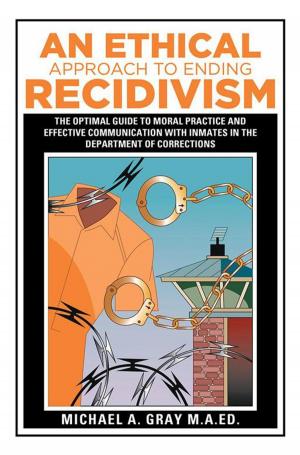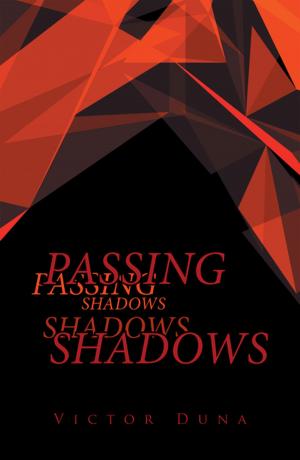| Author: | A. Roy Horn | ISBN: | 9781441576125 |
| Publisher: | Xlibris US | Publication: | August 12, 2009 |
| Imprint: | Xlibris US | Language: | English |
| Author: | A. Roy Horn |
| ISBN: | 9781441576125 |
| Publisher: | Xlibris US |
| Publication: | August 12, 2009 |
| Imprint: | Xlibris US |
| Language: | English |
Heroes, Sages and Madmen is not a book for everyone, but its potent message is about everyone. It reveals a direct and honest no nonsense revelation for spiritual aspirants who with courage, heroism, and sincerity are ready to go beyond the limitations of popular religion, academic philosophy, physical exercise yoga, and mental meditation. It is a revealing new, fresh, and amazing look into the four major traditional Paths of Enlightenment. It takes you where very few will go. It takes you into the midst of the personal attainments, blisses, challenges, pitfalls, and dangers of spiritual practices. And, it takes you into the consciousness and personal strategies of the far reaching socially popular and pretentious pop-guru. The seventy-nine short conversations in this book are guaranteed to convey many key secret spiritual teachings of the past. These secret spiritual teachings are traditionally known only by true and ripe spiritual Heroes and authentic Sages, Saints, and Yogis. Within these pages, you can discover what causes the social bondage, personal dissatisfaction, and the failing habitual struggles for inner Happiness and Peace. In the midst of the enigma and quagmire of ordinary thinking and analytical minds, the author reveals and restates many ancient esoteric secrets of spirituality. And, most importantly, the author shows how you can find a way out of your spiritual, social, and personal dilemmas. In the questions and answers in these conversations, many universal truths are delineated from major philosophies, religions, and spiritual practices and then their apparent differences are explored, summed up, and reconciled. The questions and answers in this book originated from dozens of sincere spiritual aspirants from group sessions, e-mails, personal notes, formal letters, telephone conversations, and one-on-one sessions since the early 1980s. Each question and answer is paraphrased by the author. The information, knowledge, and wisdom in this book have been distilled directly from personal experience from a lifetime of spiritual study and practices. The questions and answers are direct and sometimes surprising. At other times, the authors direct answers may challenge the spiritual assumptions of many neophyte and mature spiritual aspirants. The purpose of each answer was to directly serve the sincere spiritual aspirants spiritual development and awakening beyond their popular religious, academic philosophical, and social belief assumptions. In addition, popular misunderstandings surrounding classical spiritual teachings and their four major traditional Paths of Enlightenment and practice of yoga are described, evaluated, and discussed in depth. And lastly, the thinking-analytical meditation methods of popular spiritual movements in the West (European cultures) are considered in contrast to the contemplative meditations of the great Sages, Saints, and Yogis of the classical East (Non-European cultures). Unfortunately, the English language does not lend itself to explain and define the metaphysical principles and concepts of contemplative spirituality. Contemporary English is predominately a language of definitions, names, forms, and objects as demonstrated in English as used throughout the material world for business and commerce. Other languages such as Sanskrit, Pali, Tamil, and Hebrew are spoken and written to understand and verbally communicate both the dual physical world of objects and the multidimensional transcendental spiritual world beyond social psychology and formulative physics. For this reason, the author has modified many spelling, grammar, and syntax rules to emphasize and endeavor to explain contemplative concepts that cannot be explained by academic English. Therefore, you may discover that many sections may contain imperfect spelling, grammar, and syntax that are ordinarily absent from professionally produced books. To assure the authors metaphysical meani
Heroes, Sages and Madmen is not a book for everyone, but its potent message is about everyone. It reveals a direct and honest no nonsense revelation for spiritual aspirants who with courage, heroism, and sincerity are ready to go beyond the limitations of popular religion, academic philosophy, physical exercise yoga, and mental meditation. It is a revealing new, fresh, and amazing look into the four major traditional Paths of Enlightenment. It takes you where very few will go. It takes you into the midst of the personal attainments, blisses, challenges, pitfalls, and dangers of spiritual practices. And, it takes you into the consciousness and personal strategies of the far reaching socially popular and pretentious pop-guru. The seventy-nine short conversations in this book are guaranteed to convey many key secret spiritual teachings of the past. These secret spiritual teachings are traditionally known only by true and ripe spiritual Heroes and authentic Sages, Saints, and Yogis. Within these pages, you can discover what causes the social bondage, personal dissatisfaction, and the failing habitual struggles for inner Happiness and Peace. In the midst of the enigma and quagmire of ordinary thinking and analytical minds, the author reveals and restates many ancient esoteric secrets of spirituality. And, most importantly, the author shows how you can find a way out of your spiritual, social, and personal dilemmas. In the questions and answers in these conversations, many universal truths are delineated from major philosophies, religions, and spiritual practices and then their apparent differences are explored, summed up, and reconciled. The questions and answers in this book originated from dozens of sincere spiritual aspirants from group sessions, e-mails, personal notes, formal letters, telephone conversations, and one-on-one sessions since the early 1980s. Each question and answer is paraphrased by the author. The information, knowledge, and wisdom in this book have been distilled directly from personal experience from a lifetime of spiritual study and practices. The questions and answers are direct and sometimes surprising. At other times, the authors direct answers may challenge the spiritual assumptions of many neophyte and mature spiritual aspirants. The purpose of each answer was to directly serve the sincere spiritual aspirants spiritual development and awakening beyond their popular religious, academic philosophical, and social belief assumptions. In addition, popular misunderstandings surrounding classical spiritual teachings and their four major traditional Paths of Enlightenment and practice of yoga are described, evaluated, and discussed in depth. And lastly, the thinking-analytical meditation methods of popular spiritual movements in the West (European cultures) are considered in contrast to the contemplative meditations of the great Sages, Saints, and Yogis of the classical East (Non-European cultures). Unfortunately, the English language does not lend itself to explain and define the metaphysical principles and concepts of contemplative spirituality. Contemporary English is predominately a language of definitions, names, forms, and objects as demonstrated in English as used throughout the material world for business and commerce. Other languages such as Sanskrit, Pali, Tamil, and Hebrew are spoken and written to understand and verbally communicate both the dual physical world of objects and the multidimensional transcendental spiritual world beyond social psychology and formulative physics. For this reason, the author has modified many spelling, grammar, and syntax rules to emphasize and endeavor to explain contemplative concepts that cannot be explained by academic English. Therefore, you may discover that many sections may contain imperfect spelling, grammar, and syntax that are ordinarily absent from professionally produced books. To assure the authors metaphysical meani















